Minglei You
Model-free Optimization and Experimental Validation of RIS-assisted Wireless Communications under Rich Multipath Fading
Feb 21, 2023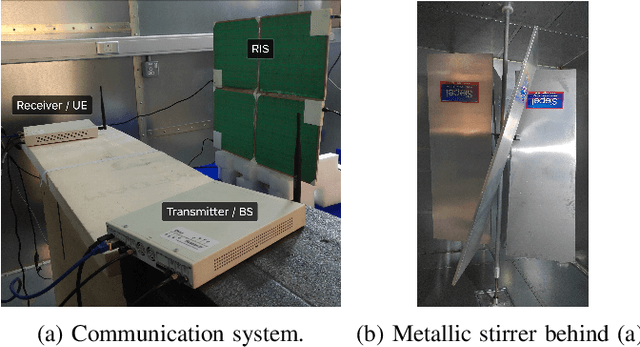
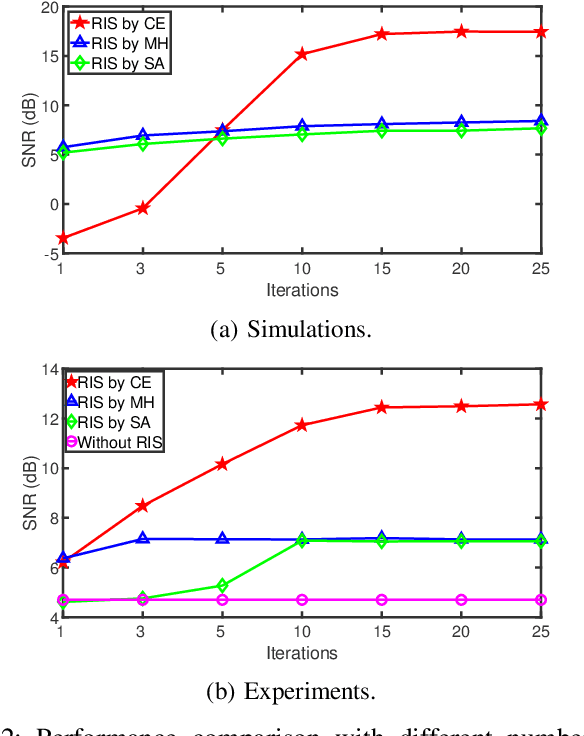
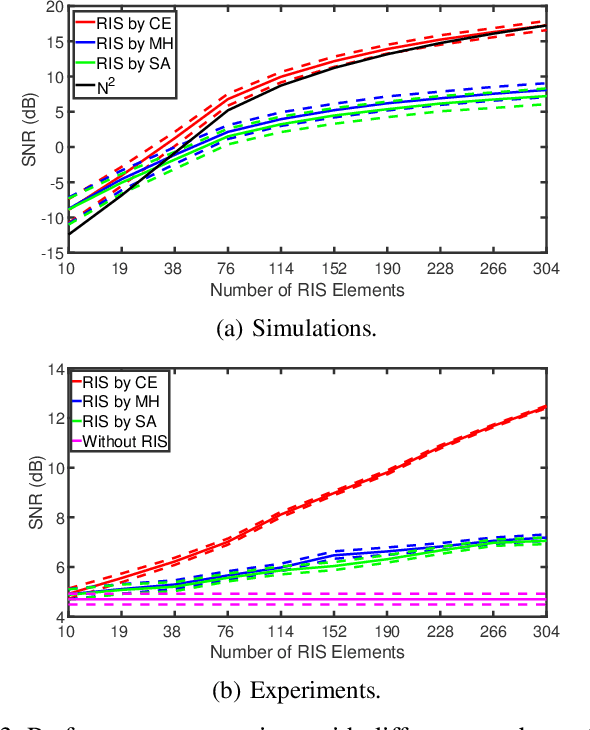
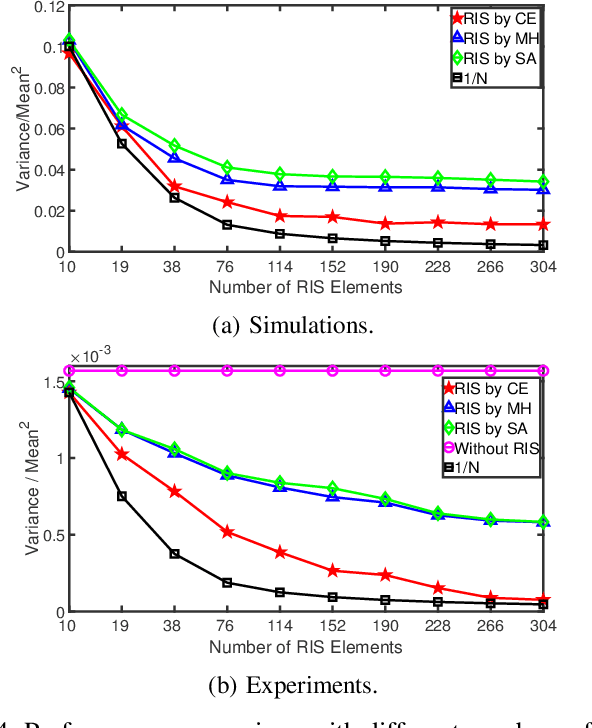
Abstract:Reconfigurable intelligent surface (RIS) devices have emerged as an effective way to control the propagation channels for enhancing the end users' performance. However, RIS optimization involves configuring the radio frequency (RF) response of a large number of radiating elements, which is challenging in real-world applications due to high computational complexity. In this paper, a model-free cross-entropy (CE) algorithm is proposed to optimize the binary RIS configuration for improving the signal-to-noise ratio (SNR) at the receiver. One key advantage of the proposed method is that it only needs system performance parameters, e.g., the received SNR, without the need for channel models or channel estimation. Both simulations and experiments are conducted to evaluate the performance of the proposed CE algorithm. The results demonstrate that the CE algorithm outperforms benchmark algorithms, and shows stronger channel hardening with increasing numbers of RIS elements.
Design and Analysis of SWIPT with Safety Constraints
Nov 20, 2021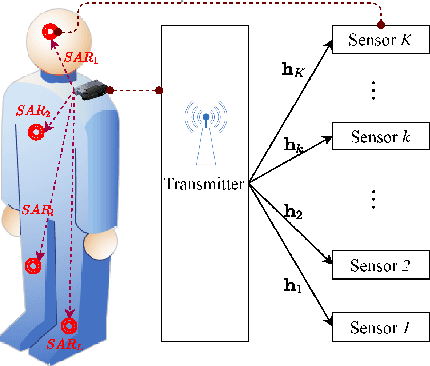
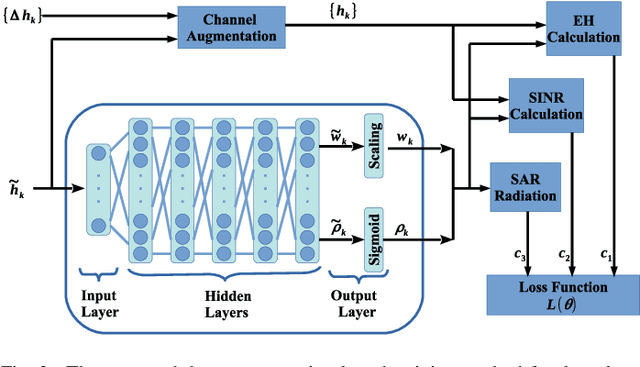
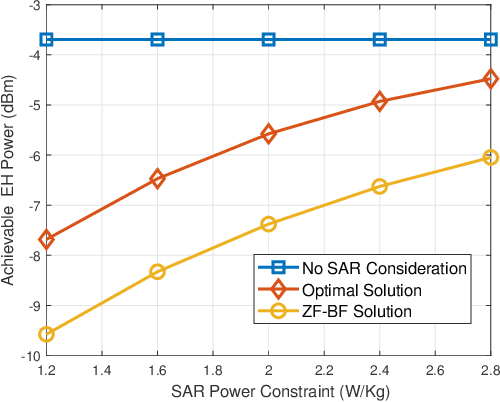
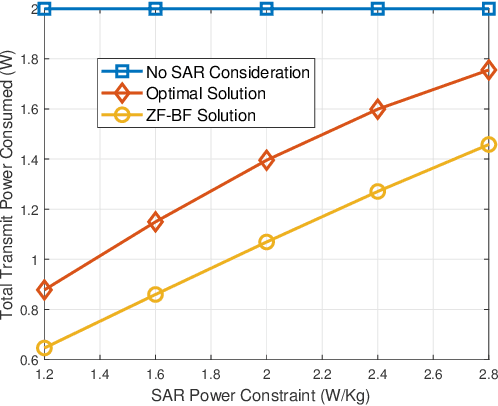
Abstract:Simultaneous wireless information and power transfer (SWIPT) has long been proposed as a key solution for charging and communicating with low-cost and low-power devices. However, the employment of radio frequency (RF) signals for information/power transfer needs to comply with international health and safety regulations. In this paper, we provide a complete framework for the design and analysis of far-field SWIPT under safety constraints. In particular, we deal with two RF exposure regulations, namely, the specific absorption rate (SAR) and the maximum permissible exposure (MPE). The state-of-the-art regarding SAR and MPE is outlined together with a description as to how these can be modeled in the context of communication networks. We propose a deep learning approach for the design of robust beamforming subject to specific information, energy harvesting and SAR constraints. Furthermore, we present a thorough analytical study for the performance of large-scale SWIPT systems, in terms of information and energy coverage under MPE constraints. This work provides insights with regards to the optimal SWIPT design as well as the potentials from the proper development of SWIPT systems under health and safety restrictions.
Digital Twins based Day-ahead Integrated Energy System Scheduling under Load and Renewable Energy Uncertainties
Sep 29, 2021



Abstract:By constructing digital twins (DT) of an integrated energy system (IES), one can benefit from DT's predictive capabilities to improve coordinations among various energy converters, hence enhancing energy efficiency, cost savings and carbon emission reduction. This paper is motivated by the fact that practical IESs suffer from multiple uncertainty sources, and complicated surrounding environment. To address this problem, a novel DT-based day-ahead scheduling method is proposed. The physical IES is modelled as a multi-vector energy system in its virtual space that interacts with the physical IES to manipulate its operations. A deep neural network is trained to make statistical cost-saving scheduling by learning from both historical forecasting errors and day-ahead forecasts. Case studies of IESs show that the proposed DT-based method is able to reduce the operating cost of IES by 63.5%, comparing to the existing forecast-based scheduling methods. It is also found that both electric vehicles and thermal energy storages play proactive roles in the proposed method, highlighting their importance in future energy system integration and decarbonisation.
* 28 pages, 8 figures, journal paper accepted by Applied Energy
Model-driven Learning for Generic MIMO Downlink Beamforming With Uplink Channel Information
Sep 16, 2021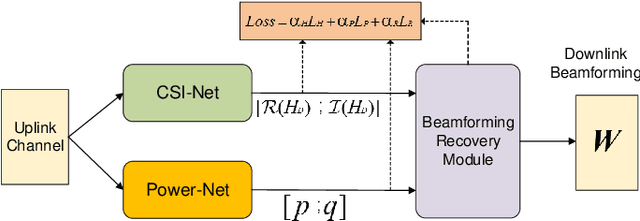
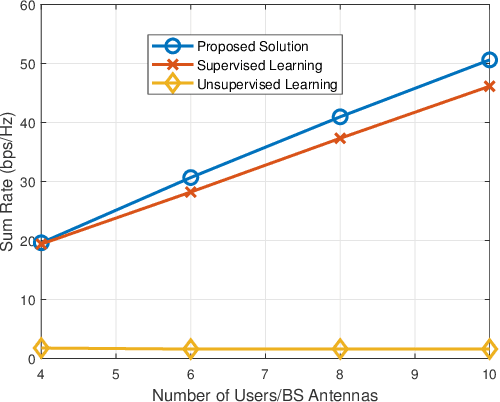
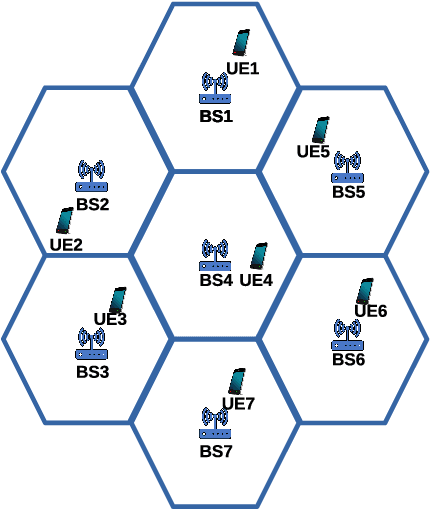
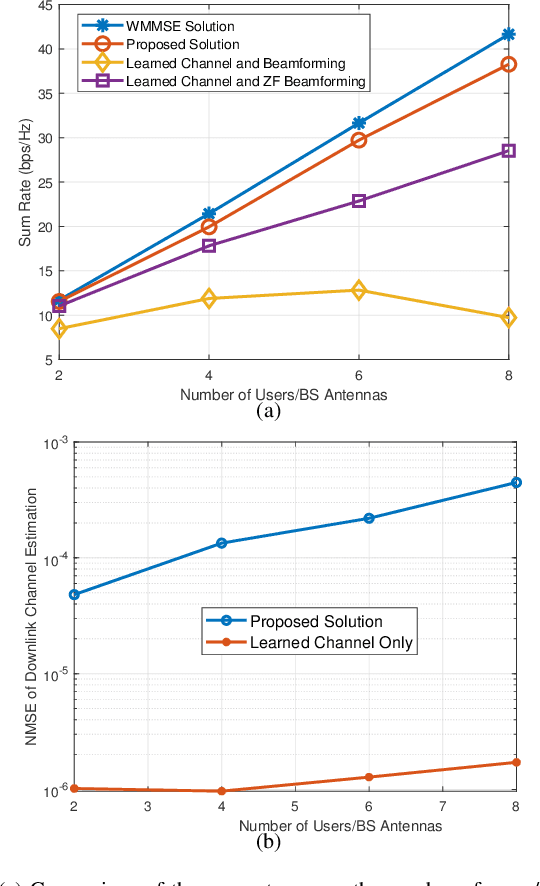
Abstract:Accurate downlink channel information is crucial to the beamforming design, but it is difficult to obtain in practice. This paper investigates a deep learning-based optimization approach of the downlink beamforming to maximize the system sum rate, when only the uplink channel information is available. Our main contribution is to propose a model-driven learning technique that exploits the structure of the optimal downlink beamforming to design an effective hybrid learning strategy with the aim to maximize the sum rate performance. This is achieved by jointly considering the learning performance of the downlink channel, the power and the sum rate in the training stage. The proposed approach applies to generic cases in which the uplink channel information is available, but its relation to the downlink channel is unknown and does not require an explicit downlink channel estimation. We further extend the developed technique to massive multiple-input multiple-output scenarios and achieve a distributed learning strategy for multicell systems without an inter-cell signalling overhead. Simulation results verify that our proposed method provides the performance close to the state of the art numerical algorithms with perfect downlink channel information and significantly outperforms existing data-driven methods in terms of the sum rate.
 Add to Chrome
Add to Chrome Add to Firefox
Add to Firefox Add to Edge
Add to Edge